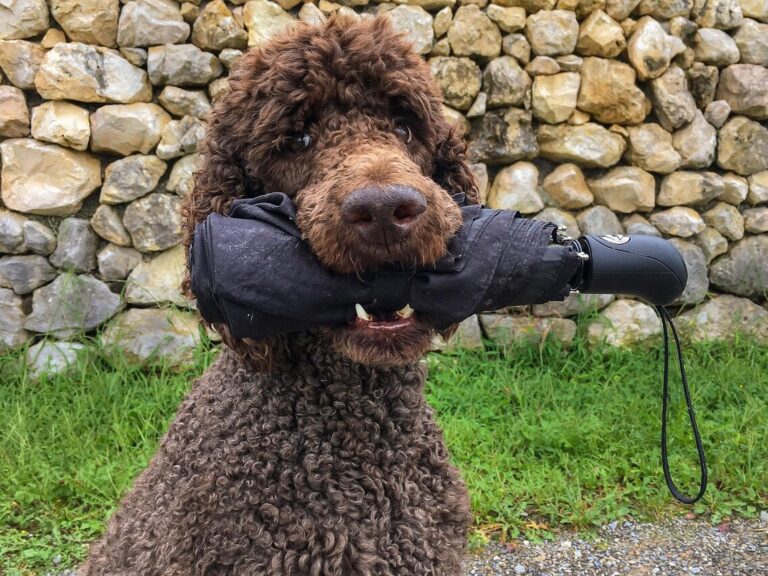10 Distinct Traits That Make Basset Hounds And Bloodhounds Unique
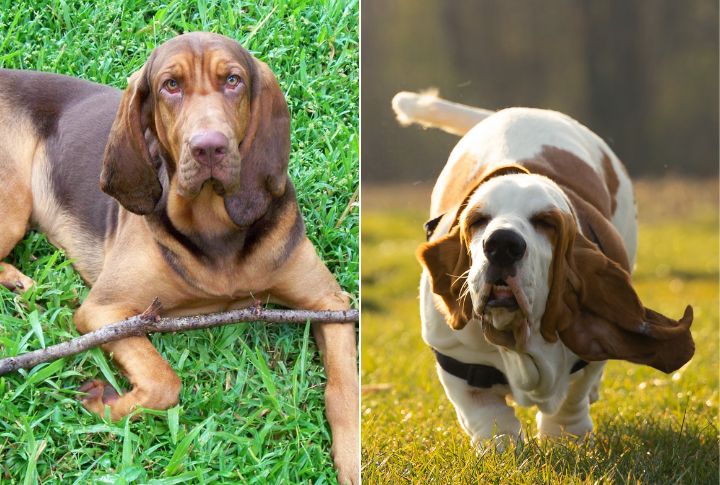
Basset Hounds and Bloodhounds might share some features, but their differences go far beyond looks. Each breed was developed with specific jobs in mind, reflected in everything from their ears to their endurance. This article breaks down 10 key traits that distinguish one from the other, offering a closer look at what truly sets them apart.
Ear Length And Purpose
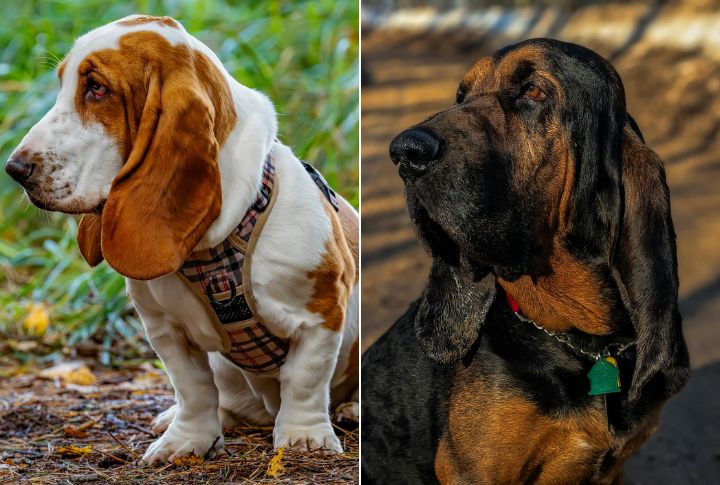
Drag-length ears aren’t just for show. Bloodhounds have up to 12 inches of thin, tapered flaps built to funnel scent. Bassets average slightly shorter, around 8–10 inches, with broader, rounder lobes designed to sweep the ground and gather nearby odors during trailing.
Tracking Instincts And Scent Drive

Scent work defines both breeds, but the scale isn’t close. A Bloodhound uses 300 million scent receptors to follow human trails that are days old. On the other hand, Bassets operate on 220 million and stick to short-distance tracking, staying close to small game and foot trails.
Facial Wrinkles And Skin Texture

Thick folds hang from a Bloodhound’s face and neck, capturing scent particles as it moves. Meanwhile, Bassets show gentler wrinkling, mostly below the eyes and neck. The extra skin may look charming, but both breeds face moisture issues, especially the Basset in humid environments.
Communication Style And Pack Behavior

Unlike many breeds, Bloodhounds rarely bark without cause. Their signature baying comes in moments of focus or distance. Bassets, on the other hand, are vocal from boredom or even hunger. Barking patterns reflect not just purpose but emotional sensitivity and group bonding.
Overall Body Structure

Powerfully tall and muscular, Bloodhounds top out at 27 inches and 110 pounds. In contrast, Bassets pack up to 65 pounds onto a 15-inch frame. That low-slung, hefty build anchors them in thickets and brush, while Bloodhounds roam farther, covering distance with a longer stride.
Energy Levels And Stamina

While Bloodhounds have the stamina to track relentlessly, Bassets are better at shorter pursuits and tire more quickly. The contrast becomes clear fast: one thrives on movement and endurance, and the other is made to pause, sniff, and rest.
Eye Shape And Vision Issues
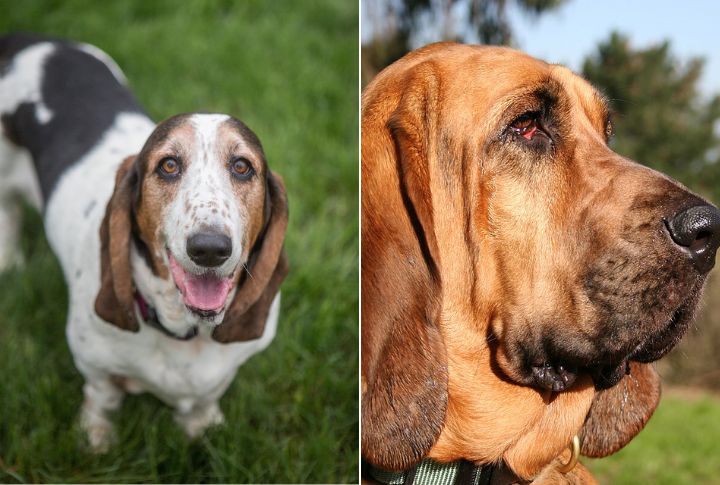
The Bloodhound’s saggy lids and exposed haws mean their eyes tear up often, requiring frequent cleaning. In contrast, Bassets’ rounded eyes protrude and are prone to irritation and ectropion. Both breeds can appear mournful by design, but their eye care routines differ more than their appearance suggests.
Skull Shape And Head Proportions
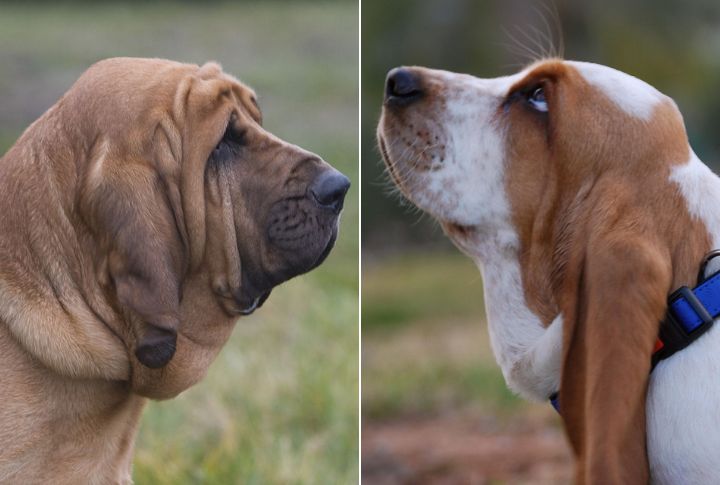
A narrow, extended skull defines the Bloodhound, with recessed eyes and a scent-optimizing muzzle. In contrast, Bassets feature wide domes and shorter snouts geared for low, brush-level tracking. These skeletal differences shape not only the look but also how scent enters the nose.
Trainability And Stubborn Streaks
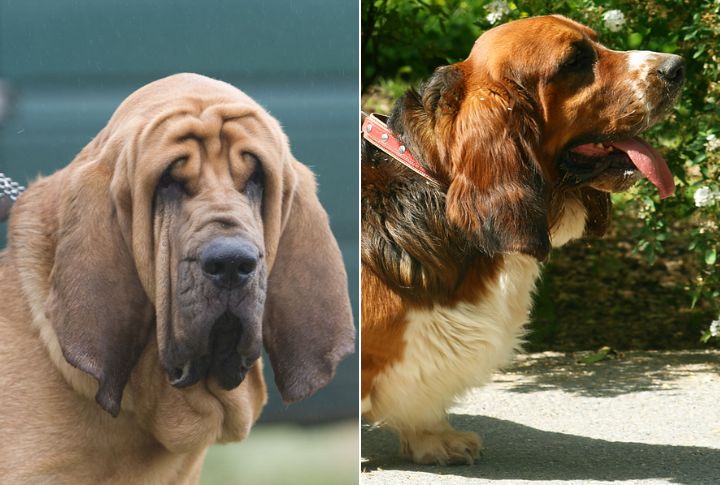
When a Bloodhound follows a scent, it tunes out the world. Commands don’t matter. But for Bassets, motivation often comes wrapped in something edible. Both resist routine training, but Bloodhounds do it out of drive, Bassets out of stubborn disinterest.
Tail Carriage And Expression
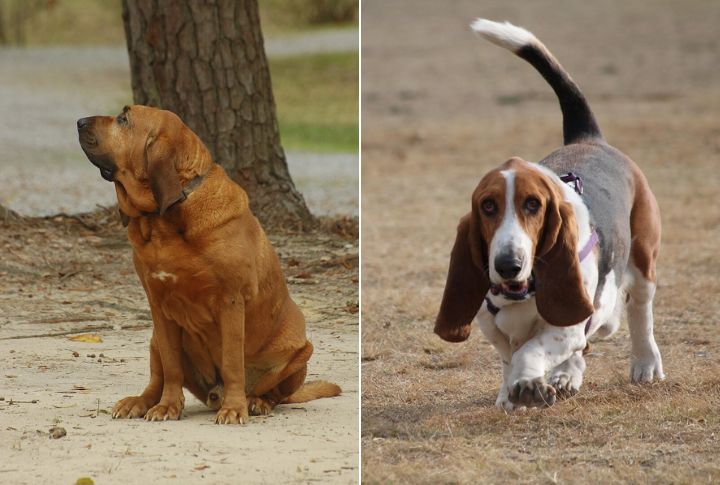
Lifted high and curved, a Bloodhound’s tail is a visual flag for handlers working through rough cover. Bassets carry a straight tail with a white tip, designed for visibility in thick ground-level brush. The difference is subtle but rooted in functional hunting design.




